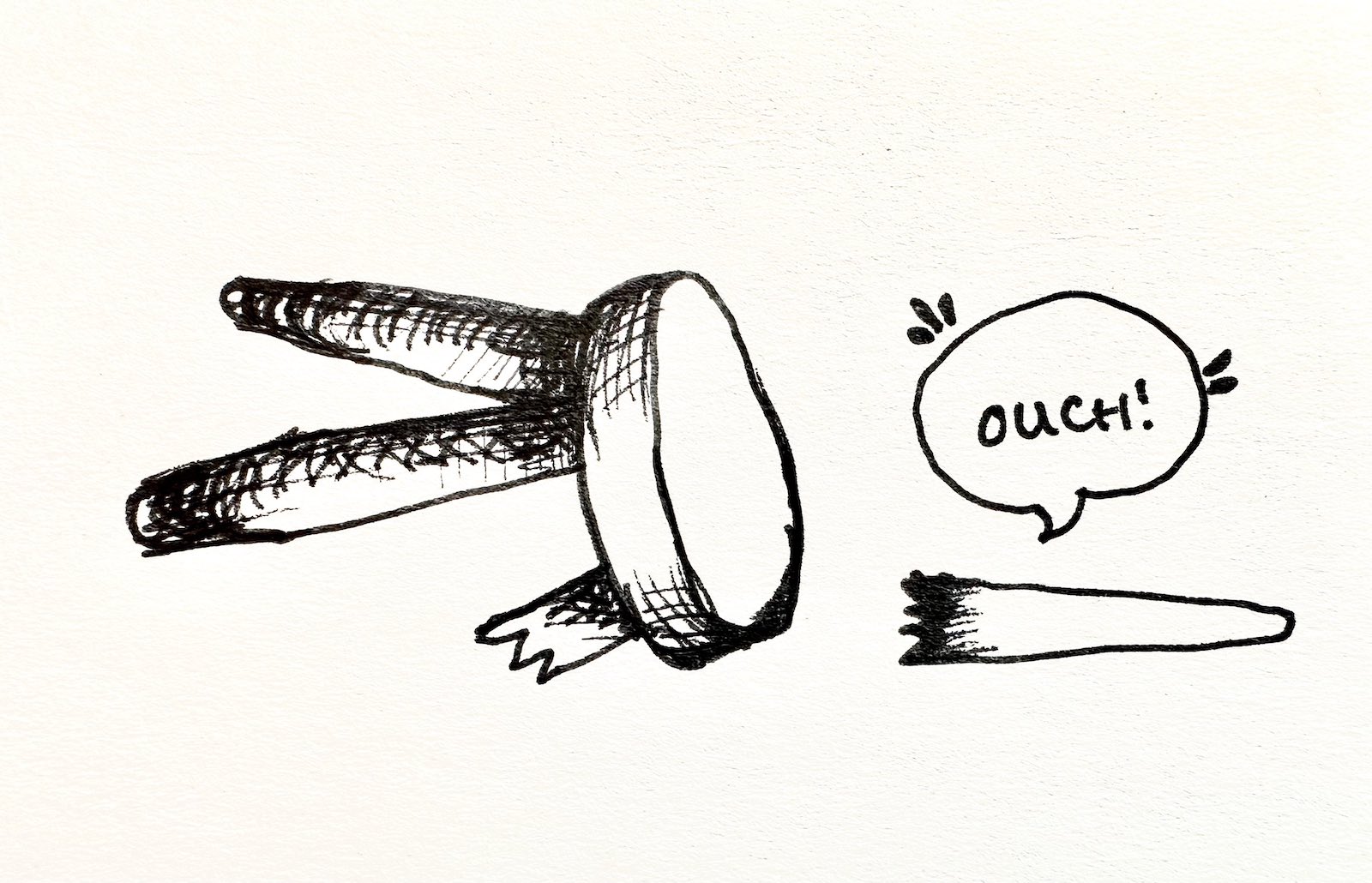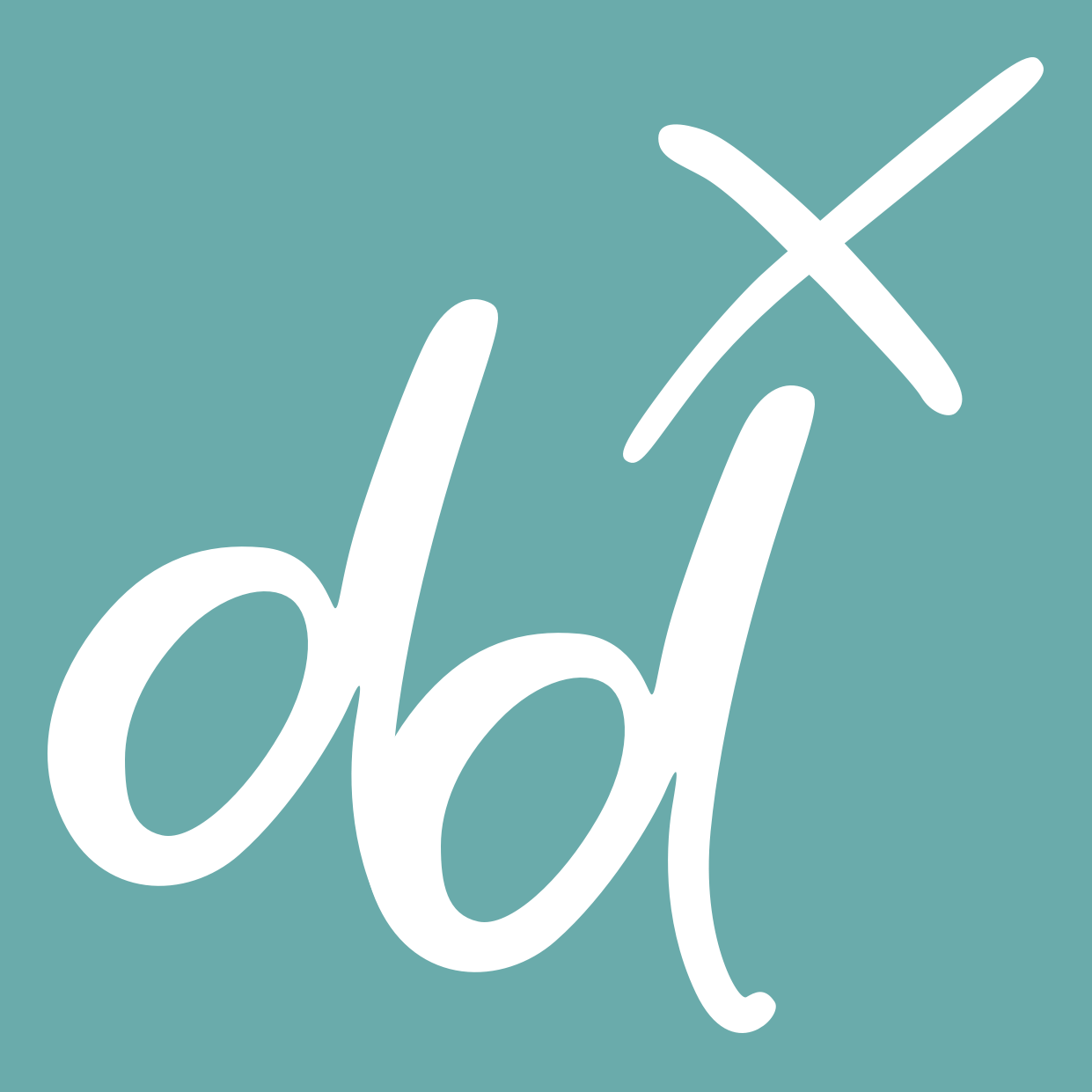Your cart is currently empty!
The Broken Three-legged Stool
By
.

The Product Design & UX industry is in the middle of an awakening. Following mass layoffs that certainly seem to disproportionally affect Design, Content and Research teams this past year, and the dramatic flip in the availability of positions in the job market, we are starting to look at our context through a new lens of problem solving. The promise of working in collaborative “three-legged-stool” product teams (see Marty Cagan and Teresa Torres) to create impactful products that of value for customers and businesses is broken.
I’ve led product work in three different companies, solving different problem spaces with different humans. The most successful teams were the ones with all three disciplines at the table, collaborating and leveraging the tension between disciplines to make decisions together. In other teams, there was a lack of one or two legs of the stool, or one leg was significantly longer than the others. Design’s ability to have true business impact is seen in these environments.
“There is a direct correlation between the number of business benefits that design drives and the degree of organizational adoption of design.”
– Design Yesterday Today from Invision
Each discipline brings different points of view, inherent biases, and essential skillsets to launch to the table. It’s a mix of the good and not-so-great of each. And I’ve seen the full gamut across all disciplines. I would argue that Engineering and Product as disciplines have had more time to mature as organizations in complex systems, and it’s pretty typical for both to bring their own agenda’s to the table too – from tech-debt reduction, to up-time foundational work (Eng) and the consolidated priorities from a huge variety of stakeholders (Product).
Design as a discipline has been playing catch up over the past 6-10 years and is the most junior in organizational maturity at most companies. Design expertise ranges from business and discovery, to detailed interface work, and usually also includes Accessibility specialists, Content Design work and many times the User Research function also.
I’ve found myself reckoning with the question:
What has held design back along this journey… and what is ours to be accountable for?
The Cognitive Load of Collaboration is Too High
It’s been hard to work with Design! For 99% of the cross-functional partners I’ve jammed with, a common complaint is lack of consistency from Design as a discipline. Why are there different types of Designers? Why can an Information Architect not create “pixel-perfect” work? Can we deprioritize critical accessibility flaws or skip research to move faster? To communicate needs they made a sketch in .ppt and handed off to engineering, completely avoiding interaction with Design. Many did not have Design assigned to their Products and have had to learn to make do without.
This is where I look back at my own career and see opportunities to do things differently. I know so much more now about managing change cross-functionally, that when I was a first-time Director of Product Design I would have changed how I showed up. I was also grappling with trying to find belonging with my cross-functional peers, which as a human is a critical need.
Constantly Being in Defense Mode (Reasonably so) has Distracted from Value-Delivery
“I don’t know why I’m being told I have to meet with you, Design has no value here.” from a Head of Product to a UX Design VP (me), during an intro meeting my first week at a new job
If anyone doubts the sheer daily battle of being a Design-oriented human in Product environments, you can read this article, or this reddit thread, or this article. The daily questioning of having not only a seat at the table, but the right to have a job is real. And it’s human to cause a reaction of defensiveness. Design is unfortunately still seen as expendable, despite the continued proof of the positive impact on business when Design organizations are supported and invested in to reach maturity. Design Leaders especially have been forced to spend SO MUCH time repeating the ROI of Design, Discovery and Research that this has detracted from the ability to improve quality of the work, and the maturation organizationally. I’ve lost count of simply trying to get the Design leg of the stool invited to key decision making moments, and the excuses range from “oh, we didn’t think we had to”, to “there are a lot of people invited already” to “we forgot, who are you again?”
Meetings are expensive. Big meetings are terrible, especially without talented facilitation. But the biggest waste has been the attempts to invest in Design, and then other disciplines not being held accountable in the shared success of all legs of the stool.
Trying to Prove our ROI… for eternity
Design Leaders started to tackle the problem at hand, but I think we had defined the problem incorrectly. We started gaining MBAs, increasing our business acumen, and showcasing results that we could track and monitor to stakeholders. Running AB Tests to demonstrate time and time again the value in literal dollars of user-informed design decisions. Leading Product Discovery to create huge services and systems that span enterprises, to be overshadowed by other disciplines seeking credit and face-time. The business value of Design has been proven.
The companies in our index that performed best financially understood that design is a top-management issue, and assessed their design performance with the same rigor they used to track revenues and costs. In many other businesses, though, design leaders say they are treated as second-class citizens.
– McKinsey & Company The Business Value of Design
We also continued to report into Product Management in many instances, typically leveled below our peers yet spanning much wider scopes of the business. This caused availability issues (no human can be in four “business critical” offsites at once across the Product Areas they support). We gained the reputation of not being available, or not deeply understanding each area “enough”.
It was never enough, yet we tried so hard to the point of burnout and exhaustion: “I knew Design Leaders couldn’t hack it”.
We are awakening to being gaslit.
“the truth is, you cannot overwork your way into being valued. You cannot explain or fight your way into being valued. You can’t prove your value to someone who isn’t interested in seeing it.
– Sara Wachter-Boettcher, CEO of Nice Work in **Hey designers, they’re gaslighting you.
The answer is to stop.
Hold a new boundary for your teams. It is NOT their problem if there are not enough Designers funded to support the number of product or scrum teams. There are two strategies – go back to a bench model and spread’em like peanut butter and accept you won’t be set up for success to reap full value, or rigorously prioritize products aligned to the top business priorities and refuse everything else. Funnel all other requests for design help back to the decision makers on funding. Point out the “sneaky” hiring of designer-wrists under Product Management headcount. Let PMs design in ppt without user research. Their results will demonstrate the opportunity gap in contrast to the design supported work.
Stop absorbing the business decisions that led to the inequity. This has been “good enough” for businesses at the expense of our teams so the problem isn’t rising to the top for busy executives. It’s working out okay for everyone but Design. It is not painful enough for others if we absorb the problems.
We’ve shot ourselves in the foot trying to “be a team player” and “do more with less” in hopes that it will be enough. It won’t ever be, so consider pushing the problem back to the appropriate place in the organization.
Where do we go from here?
I wish I could have written this point of view from a more hopeful and positive place. I value authenticity and I’m just not there yet. There are glimmers of excitement I hold however for the future of Design:
There are amazing Design Leaders who have C-Suite positions and are making brilliant impact on businesses, teams and customers.
There are talented folks who I see choosing to walk a different path, start their own companies, solve valuable problems and realize that they have so much to offer. Some are even doing it cross-functionally, and putting the old paradigm aside.
There are Designers stepping into Product positions and bringing a design-forward approach into the discipline of Product. UX Engineers and front-end-developers are bridging gaps between disciplines. Content Designers have embraced utilizing their skillsets to lead in AI Prompt Writing.
And perhaps most importantly, we are waking up to the chronic gaslighting and false promises of the three-legged-stool. With awareness will come power to make different choices.
I believe in you, and I see you.
